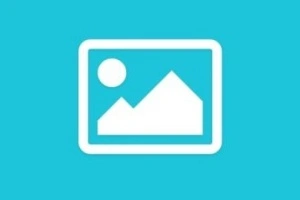Networking Social | Definition, Examples, Types, and History
Published: 4 Sep 2024
What is Social Networking in Simple Words
Social networking is all about connecting with people online through websites or apps. It allows you to keep in touch with friends and family, share your thoughts, photos, and updates, and stay informed about what’s happening in the lives of those you care about. Whether it’s sharing a special moment, joining groups with similar interests, or simply chatting with others, social networking makes it easy to stay connected and be part of a larger community from anywhere in the world.
Examples of Social Networking
Here are some common example of social networking are as follows:
- Facebook: A website that allows you to communicate with friends and family, exchange pictures, and make updates.
- Instagram: A site for sharing photos and videos, and following people or brands you like.
- Twitter: A place for posting short messages called tweets, and following news and updates from others.
- LinkedIn: A network for connecting with professionals, finding job opportunities, and sharing career updates.
- Pinterest: A site for discovering and saving ideas on topics like recipes, DIY projects, and fashion.
- Social networking starts by creating an account on a website or app.
- You can then connect with friends, family, or others by adding them as contacts.
- Once connected, you can share posts, photos, and updates that your contacts can see.
- You can also like, comment, or share other people’s posts to interact with them.
- Many social networking sites have groups or communities where you can join discussions on topics you’re interested in.
- You can also follow pages or profiles to stay updated on news, events, or activities.
- The more you interact, the more you stay connected and informed about what’s happening in your social circle.
| Why is social networking important? |
|---|
|
Types of Social Networking
Social networking comes in various types, each serving a different purpose. Each type is designed to help you connect, share, or interact in unique ways, depending on what you need.
- Social Media Platforms: Social media platforms include online forums, photo and video-sharing websites, and messaging applications such as Facebook, Instagram, and Twitter. These platforms let users stay in touch with friends and family, follow celebrities or brands, and join groups with similar interests. They make it easy to see what others are sharing and to share your own moments with a wide audience.
- Professional Networks: Professional networks are websites like LinkedIn where you can connect with people for work-related reasons. They facilitate career development and management by giving you the chance to network with peers, identify employment openings, and highlight your qualifications. These networks are great for networking, finding new job prospects, and staying updated on industry trends.
- Messaging Apps: Telegram and WhatsApp are examples of messaging programs that provide quick file or photo sharing, audio or video calls, and text message sending. They make it simple and quick for you to stay in contact with friends, family, and colleagues. With these apps, you can chat one-on-one or in groups, making communication fast and convenient.
- Photo and Video Sharing Sites: You can post and share photos and videos with others on photo and video-sharing websites like YouTube and Instagram. These platforms allow you to discover content from people around the world, follow your favorite creators, and share your own moments or talents. They make it easy to find and enjoy visual content, whether you’re looking for entertainment, tutorials, or inspiration.
- Interest-Based Communities: Interest-based communities are online groups or forums where people gather to talk about specific topics or hobbies they’re passionate about. Sites like Reddit and Meetup have these communities, allowing you to join discussions, ask questions, and share ideas with others who have similar interests. They help you connect with like-minded people and explore your favorite subjects in a supportive environment.
- Blogs and Microblogs: Blogs and microblogs are platforms where people can write and share their thoughts, stories, or updates. Blogs, like those on personal websites, are longer and cover a wide range of topics in detail. Microblogs, such as Twitter, focus on short, quick updates or messages. Both types let you express yourself and follow others’ updates in an easy and accessible way.
- Social Bookmarking Sites: Social bookmarking sites like Pinterest and Digg let you save and share links to interesting web content and articles. You can organize these links into categories, making it easy to find and revisit them later. These sites also allow you to discover new content that others have bookmarked, helping you find new and relevant information based on your interests.

| Social Networking Advantages |
|---|
Social networking provides numerous benefits and unparalleled opportunities. Here are some of the pros of social networking:
|
| Disadvantages of Social Networking |
|---|
While social media offers many benefits, it also has disadvantages such as privacy issues, hacking, and cyberbullying. Here are some of the cons of social networking:
|

What are social networks in business?
Business social networks are websites and applications that businesses use to interact with clients and advertise goods and services. Examples include LinkedIn for professional connections, Facebook for engaging with a wide audience, and Instagram for sharing photos and updates. These tools help businesses interact with people, build their brand, and reach new customers.
Top 10 Social Networking Sites
Although there are many social networking sites, these are the most popular.
- Facebook: Facebook is a social networking site where you may join groups or events, share photographs and videos, and post updates to stay in touch with friends and family. It allows you to see what others are up to, comment on their posts, and stay in touch with people around the world.
- Instagram: Using the social networking app Instagram, you can post videos and images to your followers. You can also explore content from others, follow friends, and use filters and effects to make your posts look fun and creative. It’s a fantastic opportunity to learn about new trends and stay updated on the lives of the people you care about.
- Twitter: Twitter is a social media platform where you can post short messages called tweets. These tweets can include text, photos, or links, and are visible to your followers. You can follow other people to see their updates and join conversations about news, trends, and interests. It’s a quick way to share and find information.

- LinkedIn: LinkedIn is a social network for professionals where you can connect with colleagues, find job opportunities, and share updates about your career. It’s a platform for networking with other professionals, showcasing your skills and experience, and staying informed about industry news and trends.
- Pinterest: Pinterest is a site where you can discover and save ideas for things like recipes, crafts, and home decor. You create boards to organize your favorite images and find inspiration for projects or hobbies. It’s like a virtual bulletin board where you can collect and share creative ideas.
- TikTok: With the social networking app TikTok, you can make and watch quick, entertaining videos that are set to music. It’s popular for its easy-to-use tools and effects that let you add creativity to your videos. You can follow others, join trends, and explore a wide range of entertaining content.
- Snapchat: Snapchat is an app where you can send photos and videos that disappear after being viewed. It also has fun filters and effects to add to your snaps. You can chat with friends, share your daily moments, and explore stories from other users.
- Reddit: On the website Reddit, users may join various communities, known as subreddits, to talk and exchange content about particular subjects. You can post questions, share news, or comment on others’ posts. It’s a place to find interesting discussions and connect with people who have similar interests.
- WhatsApp: With the WhatsApp app, you can share images and videos with friends and family, send messages, and make audio and video chats. It’s a simple way to stay in touch and communicate instantly, whether you’re chatting one-on-one or in group conversations.
- Tumblr: Tumblr is a platform where you can post and follow a mix of text, photos, videos, and other content. It’s like a personal blog where you can share your interests and creativity, and explore posts from others. It’s a fun way to express yourself and discover new things.
History of Social Networking
- Early Beginnings (1990s): The first social networks appeared, like SixDegrees.com, which allowed users to create profiles and connect with friends.
- Rise of MySpace (2000s): MySpace became popular, letting people create personalized profiles and share updates, music, and photos.
- Facebook Emerges (2004): Facebook was launched, starting as a site for college students and growing into a global platform for connecting with friends, sharing content, and networking.
- Twitter and Microblogging (2006): Twitter introduced the concept of short, quick updates known as tweets, changing how people share news and thoughts.
- Visual Focus with Instagram (2010): Instagram launched, focusing on sharing photos and videos, and quickly became popular for its creative filters and easy sharing.
- The Rise of TikTok (2016): TikTok introduced short, engaging videos with music and effects, becoming a major hit for its fun and creative content.
- Diversification and Growth (2020s): Social networking continued to expand with new platforms and features, emphasizing various forms of content and ways to connect.
What are social networking services?
An online platform that enables connections and interactions between users is called a social networking service. Users can make profiles, submit updates, talk with friends, upload images or videos, and more. These services make it easy to stay in touch, make new connections, and join communities based on interests or activities.
Offline and Online Social Networking Services
| Offline Social Net | Online Social Net |
|---|---|
| Connecting with people in person | Connecting with people through the internet |
| Parties, clubs, community events | Facebook, Instagram, LinkedIn |
| Face-to-face conversations, phone calls | Messages, comments, likes |
| Attending events, joining groups | Sharing posts, following accounts |
| Access is limited to local area and specific times | Accessible anytime from anywhere with internet |
| More personal and direct interactions | Virtual interactions through screens |
Investigations of Social Networking
Investigating social networking means looking into how social networking sites and apps work and how they affect people. This includes studying how they help users connect with others, share information, and build communities.
It also involves examining any issues related to privacy, security, and how people use these platforms. Overall, it’s about understanding both the benefits and challenges of using social networking services.
Conclusion About What is Social Networking in Communication
Social networking is a powerful tool that helps people connect, share, and communicate online. It offers many benefits, such as staying in touch with friends and discovering new interests. However, it also comes with challenges, like privacy concerns and the spread of misinformation. By being mindful of these issues and using social networks responsibly, we can enjoy the positive aspects while minimizing the risks.
FAQS – Networking Social
The SNS is the full form of Social Networking Service.
Social networking sites are online platforms, including websites or apps, where you can create a profile, connect with friends, colleagues, and family, and share content like updates, photos, or videos. Popular examples include Facebook, Instagram, and Twitter.
Social networking can help people stay connected and share information, but it can also lead to privacy issues, misinformation, and overuse.
Social networking is using online platforms to interact with other people, share updates, and join groups based on interests or activities.
Social networking marketing uses social media platforms to promote products or services and connect with potential customers.
The purpose of social networking is to help people connect, share, and communicate with others, whether for personal relationships or professional networking.

- Be Respectful
- Stay Relevant
- Stay Positive
- True Feedback
- Encourage Discussion
- Avoid Spamming
- No Fake News
- Don't Copy-Paste
- No Personal Attacks

- Be Respectful
- Stay Relevant
- Stay Positive
- True Feedback
- Encourage Discussion
- Avoid Spamming
- No Fake News
- Don't Copy-Paste
- No Personal Attacks





